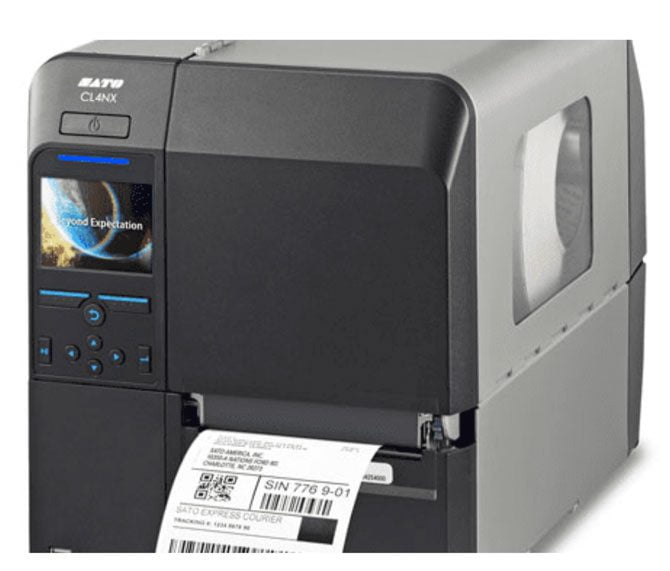Finding the right combination of tools to meet your barcode scannability, longevity and durability needs is the most important step when choosing a thermal transfer print-on-demand labeling system.
Knowing this, we’ve asked our resident printer expert, John Masica, to put together his list of five things you should consider when implementing a new thermal transfer print-on-demand solution to make sure you can build a system that’s compatible with your processes, immediate needs, and future goals.
1. Sourcing of labels, ribbon, and printer from a single supplier
By sourcing your labels, ribbon, and print system from a single supplier you gain a couple of important things: compatible components and a partner with comprehensive knowledge of your processes and solution.
Most of the time suppliers curate or custom engineer media to perform optimally with specific equipment. This is because no two thermal transfer printers function the exact same way, and no two label applications are typically the same.
Various factors play into the performance of specific media combinations making a specifically formulated ribbon and label combination the best option for your printer, as well as your tracking needs.
Suppliers who provide complete thermal transfer solutions are going to know from experience which combinations are ideal.
Discussing your processes, needs, and goals with your supplier will not only ensure you get the right combination of tools for your printer—but the best solution for your application.
Most of our customers work in harsh environments and traceability is critical. In these situations it’s not only important we understand how your labels will perform with your printer, but how well they can resist exposures to abrasion, extreme temperatures, chemicals, and more.
This discussion will also help your supplier better understand how your system will need to integrate into your existing workflow. They should have the tools and knowledge to accommodate your technological, efficiency, and service needs.
2. Reliability and longevity of the printed image itself
Longevity needs are going to vary greatly between applications. For example, when handling blood donations in the transfusion medicine industry it’s extremely important the barcode lasts for the entire life of the product, while garment tags may be temporary and therefore don’t require a long lasting mark.
This speaks to the importance of proper kitting to ensure your markings last throughout the intended life of the label while avoiding unnecessary costs and resources or straining your printer.
3. Simplicity of setup
The less effort you have to put into the implementation process the sooner you can get to work. Looking for a solution that not only supports your labeling needs but is easy to integrate, train, and maintain will boost efficiency and prevent roadblocks when it comes to usability and reliability.
Look for thermal transfer solutions that are compatible with your existing infrastructure to reduce the workload on your team—software, real estate, connectivity, etc.
It is also beneficial to source your label kits and print system from a vendor that performs media testing and print setup prior to shipping. This will minimize time to use and reduce training required once the labeling solution arrives at your facility.
4. Service and support
Be sure to choose a supplier with a service agreement in the case something does go wrong. A vendor that offers over the phone technical support or on-site troubleshooting services is a practical way to prevent costly downtime.
In regards to services to properly care for and maintain your printer, heat setting adjustments are crucial, as they allow you to print the proper image while also preserving the life of your printer by only using the necessary amount of heat to transfer the image.
5. Scannability
The scannability of labels is critical. Be sure to source your media from a supplier that verifies the correct kitting components in addition to recommending the correct print resolution to ensure barcode scannability.
This is exceptionally important for applications that utilize automatic barcode scanning processes. An unscannable barcode can backlog workflows or increase the likelihood of unplanned system downtime.
Keep these five factors in mind when seeking labeling solutions. A single supplier capable of providing all necessary products, reliability, simplicity, and service, will maximize benefits throughout your workflows.

